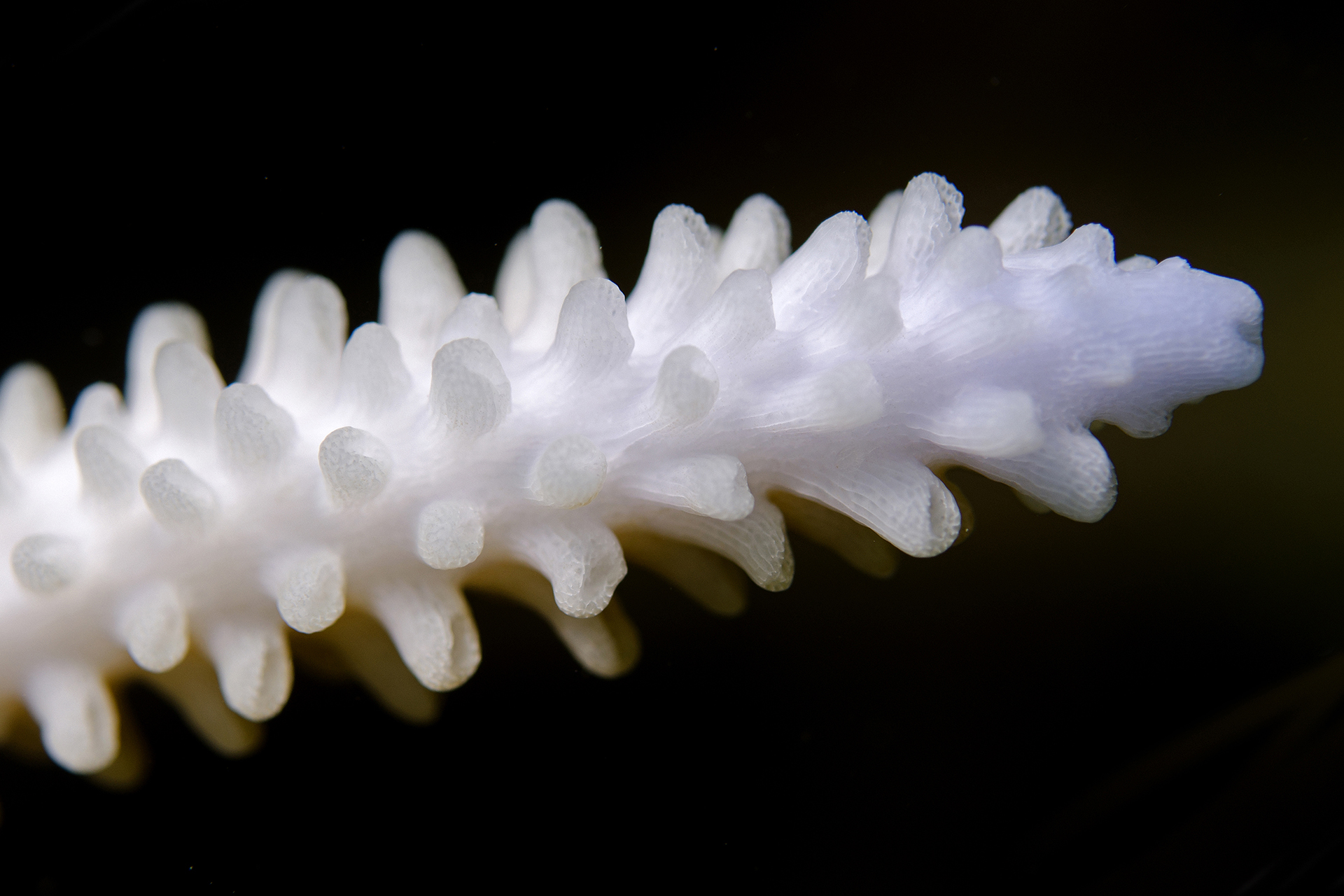Coral Bleaching
Most reef-building corals contain zooxanthellae, which are single-celled dinoflagellates that live within the coral’s tissue. Corals and zooxanthellae have a symbiotic relationship. Zooxanthellae provide carbohydrates to the coral through photosynthesis, allowing their host (the coral) to direct resources toward growth and constructing its calcium carbonate skeleton. The coral host, in return, provides the zooxanthellae with nutrients and a protected environment.
Bleaching is a stress response that occurs when the coral-zooxanthellae relationship breaks down and the zooxanthellae are expelled from the coral host or when pigments within the zooxanthellae are degraded. The loss of zooxanthellae makes the white calcium carbonate coral skeleton visible through the transparent tissue, making the coral appear bright white or ‘bleached’. Corals can survive for some time (i.e., several days or months) without their zooxanthellae, but their ability to survive depends upon the level and type of stress and the sensitivity of the coral. If stressors persist, corals may starve and die. Bleaching also occurs in other animals with zooxanthellae, such as foraminifera, sponges, anemones, and giant clams.

Close-up of a bleached skeleton of Acropora sp. coral. Photo © The Ocean Agency
What Causes Bleaching?
The primary cause of mass bleaching is elevated water temperature combined with solar irradiance. However, bleaching can be caused by a host of human-induced and natural factors including:
- Elevated or reduced water temperatures
- High solar irradiance (photosynthetically available radiation (PAR) and ultraviolet light)
- Disease
- Pollution
- Changes in salinity (e.g., salinity shock from heavy rains or floods)
- Sedimentation from activities such as dredging
- Exposure to air (e.g., due to low tide)
- Changes in water chemistry (e.g., ocean acidification)
These sources of stress can contribute to localized bleaching events (tens to hundreds of meters), but mass coral bleaching events occur at regional scales, often extending over tens to hundreds of kilometers.
